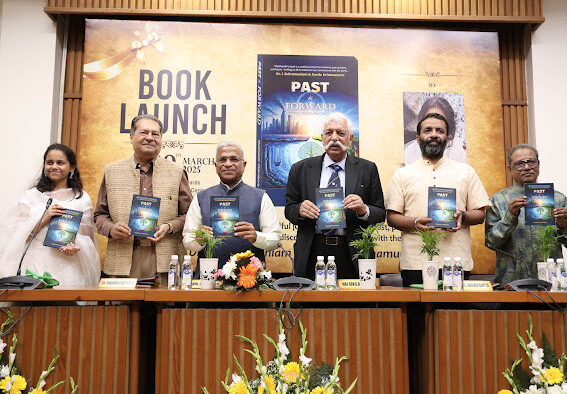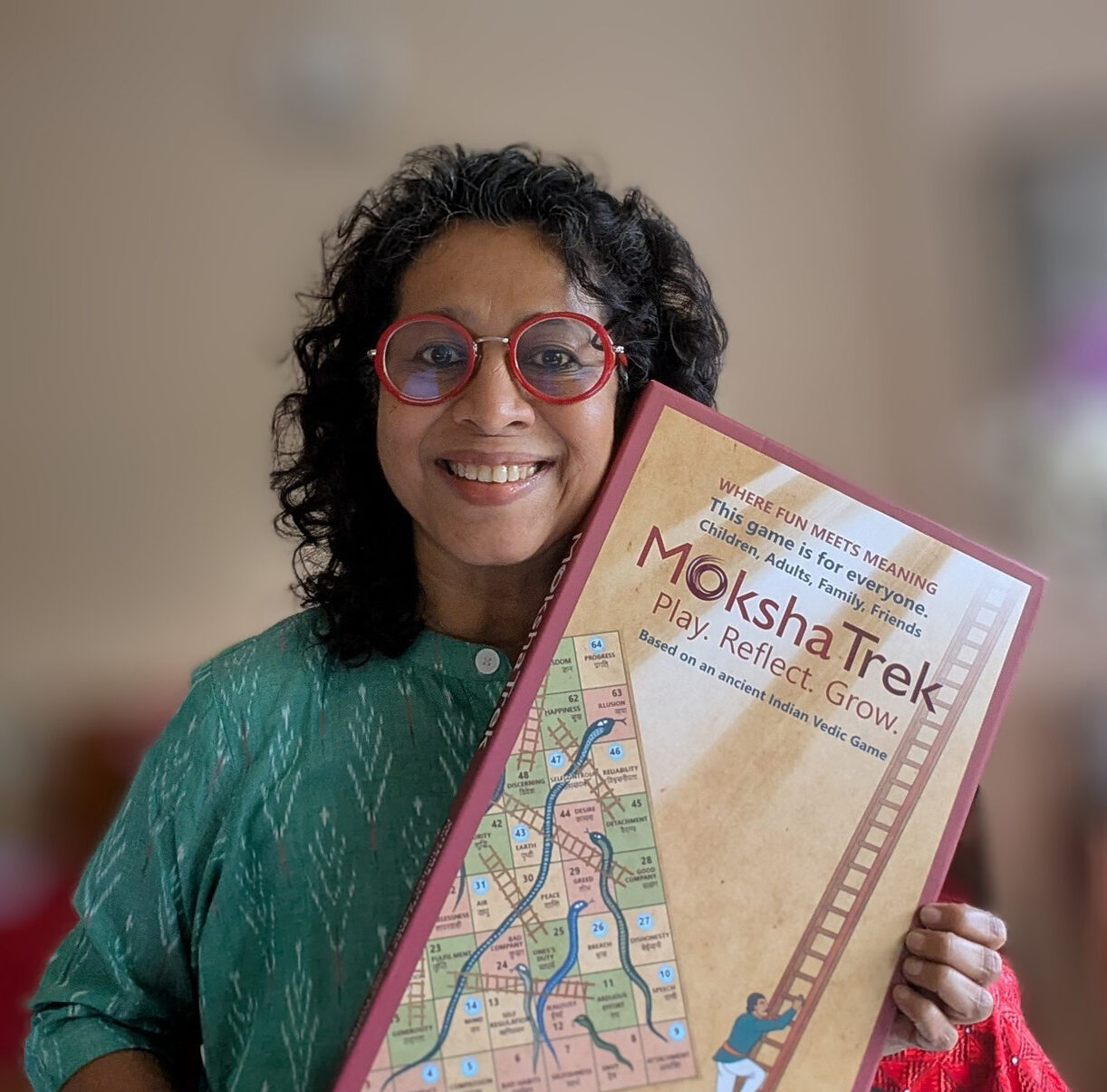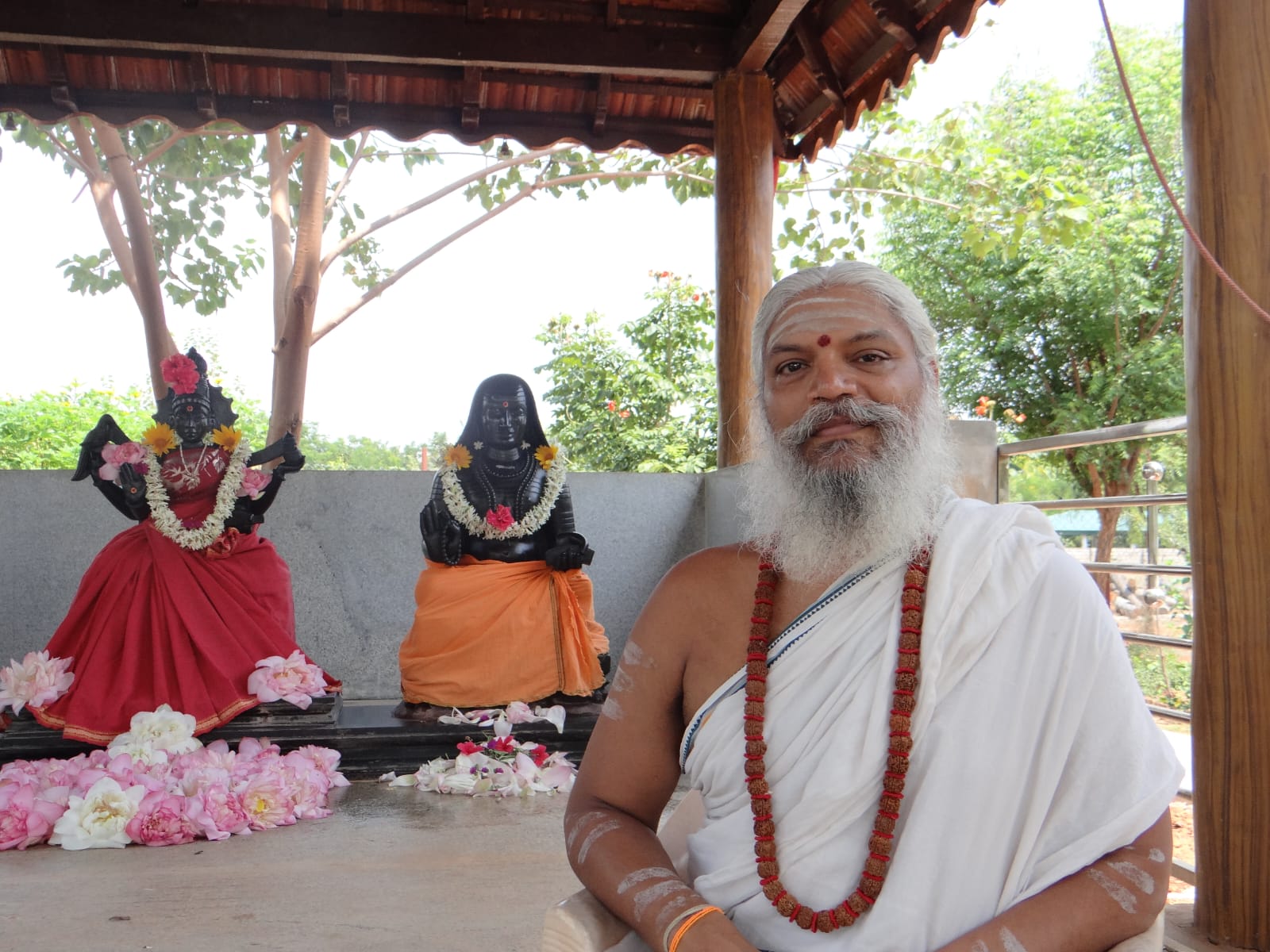At a time of escalating environmental crises and deepening social divides, it has become more urgent than ever for young people to not only understand the world they inherit - but to question, reflect, and respond to it. Young author Shubhanshi Chakraborty in her book – Past is Forward : A Journey Back to Heal the Future, writes that she is shaped by a civilisation that has long understood the interdependence of life, the sanctity of nature, and the duty of stewardship. Concepts like Dharma, Ahimsa, and Prakriti are not modern interventions - they are foundational to our way of life.
Yet today, the values that once guided our relationship with the land and each other are often overshadowed by consumption, convenience, and a growing disconnect from both community and environment. In this context, it becomes crucial for children to reclaim their role as thinkers, storytellers, and changemakers. Not in imitation of the West, but rooted in our own traditions - our forests, our rivers, our tribal wisdom, our epics, and our lived realities.
This is not just about sustainability—it is about civilisational continuity. It is about asking the right questions, even when the answers aren’t obvious. It is about writing, creating, and imagining futures that honour both science and spirit. For 17-year-old Shubhanshi, that journey began at home—with the quiet example of her father, with stories from the margins, and with the realisation that to serve the environment is to serve the soul of this country.
How did your interest in climate change, environment and tribal communities begin?
My interest in this field of work did not begin with a textbook, it began at home. I have grown up in a household where I have seen my father selflessly dedicate himself to causes greater than himself, not because of recognition, but because of his dharma, his duty. For a long time, I thought that I too would go on to follow in his footsteps and fulfil my duty towards this country by pursuing a career in social work but life in its own way, opened another door. One afternoon, I found myself speaking to my father’s friend, Shri Satyarup Siddhanta - the youngest mountaineer to complete the Seven Summits. He told me that for the last five years he had been planning to go to the North Pole but the expedition was being repeatedly called off due to climate change. It was being cancelled not because people lacked the will, not because people lacked courage, but because the ice beneath their feet was no longer able to lift them up - melting eternally. That is when I realised that climate change is a heartbreak, a stolen dream and that there are people all around this world who are being forced to give up on their hopes because of it, which is why I understood that if I serve the environment, I am serving all of humankind. I am serving the future. I am serving the divine.
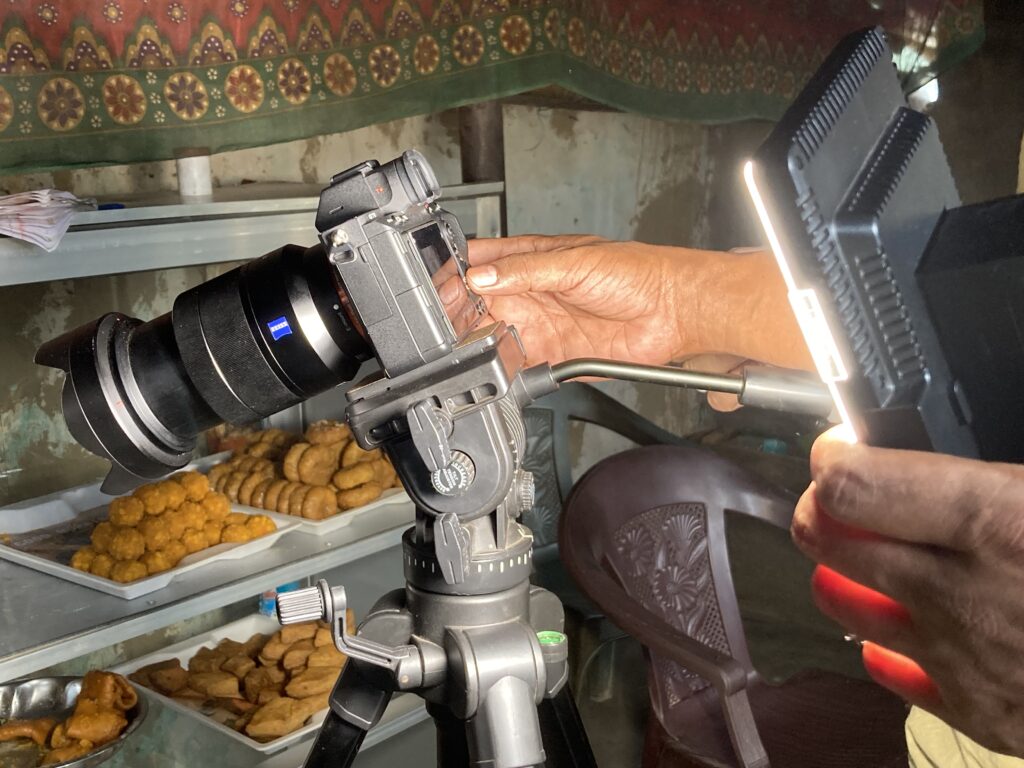
How did you decide to direct your short film Natok on Chauu dance as a 15-year-old? How did your father’s work with these communities impact you?
I recall my earliest memories to be in a small village called Pandadih in the state of Jharkhand, a village which my father has loved like his own child. I remember running barefoot through the verandah of the village home, laughing with the friends I had made there, while my father worked quietly yet tirelessly in the background. He built libraries where there were none. He championed education and opportunity. And he poured his heart into promoting the local culture, especially a powerful yet fading dance form called Chauu – a form that tells mythological and folk stories through bold, expressive movement. I have often found myself lost, in trains of thoughts with destinations I did not know of. I was inspired by my father. I wanted to be like him but I unfortunately did not know how to, so a few years back, I asked him, “What can I do? How can I help too?” He smiled and simply said, “Do it through what you’re good at.” And for me, it has always been art. That is where the idea of my short film ‘Natok’ was born. I won’t call myself a filmmaker - not in a traditional sense at least. I don’t come from a place of knowing technicalities very well. I am an artist. I work and create with my instincts. I like to take what I think, what I feel and bring it to life in front of me.
In Natok, I told a story through the eyes of a young boy from a tribal village. Every day he would watch his father become a hero through dancing Chauu. Sometimes he would see his father as Lord Ram, other times as Maa Durga—annihilating the evil like a true protagonist. But one day he accidentally sees a different side of his father—washing dishes outside a small eatery, being humiliated by the owner. This causes a cognitive dissonance in that child’s head. He is confused. Who really is his father? That fearless hero who destroys evil or this defeated man who has lost his all. He couldn't distinguish between his previous reality and this current helplessness. This contrast - the emotional dissonance the child feels - became the core of Natok. Through the film, I wanted to reflect the heartbreaking truth that while these artists pour everything they have into their craft, their art alone cannot sustain their livelihoods.
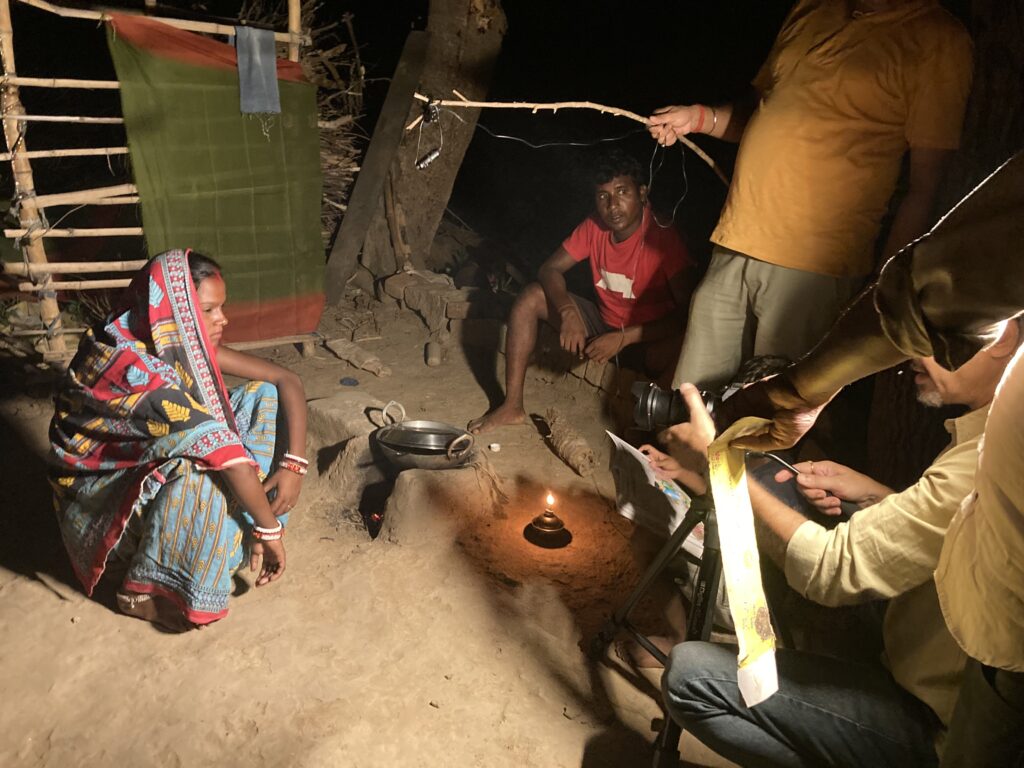
How have your ideas on Ecology and Sustainability changed over the years. In your book you talk about your gradual disassociation with Western notions of fixing problems. What in your opinion is the Indic view?
When I was younger I used to associate the term ‘sustainability’ with monumental acts - saving forests, changing policies and essentially fixing our Bhu Devi. But now, I have come to the realization that neither does mother Earth needs ‘fixing’ nor is sustainability about fixing. Sustainability is about recognising. It's about recognising our own actions and that nothing in this world exists in isolation. Every single action of ours, no matter how small or big, returns to us in the form of the rivers which we can’t drink from anymore, the air which we can’t breathe anymore and soil which can’t feed us anymore. This is simply retribution. Over time, I have felt more and more disconnected from the Western notion that all problems can be “solved” with logic, funding, or technological interventions alone. While these have their own place, the Indic worldview doesn’t begin with the problem - it begins with the self. In our culture, the Earth is seen as a goddess, as Bhu Devi instead of a resource meant to be exploited. Trees are more than timber, they are van devtas. While writing this book, I often thought why? Why in a country as culturally rich as India, this sense of connection with nature is being lost? And the answer was cultural disconnection.
Children of our villages are growing up in a liminal space, where tradition is fading and modernity hasn’t exactly arrived yet. Our stories and knowledge which once connected our children to our land are being replaced by textbooks which speak in city-centric perspectives and abstract terms. Now when a child no longer hears the stories of Prithvi, no longer understands why we worship Tulsi devi or offer water to the Peepal tree - how can they understand sustainability? So, while the Western model tells us to “fix” the planet, the Indic vision reminds us that we belong to it.
Could you talk about the guardians of nature in Hindu traditions and how can kids benefit from knowing about them?
In Indian traditions, nature has always been viewed as one with the divine. Forests, rivers, mountains - even the wind - have always been seen as living beings with consciousness. One of the most fascinating examples of this connection can be found in the stories of the Yakshas and Yakshinis - a class of mystical beings believed to be guardians of natural spaces like groves, trees, lakes, and mountains.
There is an old belief known as the Curse of the Yaksha, which warned that anyone who harmed a tree or disturbed a sacred grove protected by a Yaksha would face divine punishment - illness, misfortune, or even death. While today, such stories may seem highly superstitious to many of us, they still served as great tools for environmental protection - acting like a psychological safeguard, where people instinctively treated nature with reverence and care as they feared the consequences inviting the wrath of these beings. This enabled a society where ecological responsibility was a part of daily life through cultural memory and not something enforced by the law.
This kind of storytelling is especially important today – especially for children. Instead of teaching sustainability through cold hard data or diagrams, we can connect them with cultural stories which once shaped our relationship with nature so that when a child sees a forest, he/she can regard it as more than a patch of land and instead as the sacred home of a Yaksha - instinctively learning respect and responsibility. These ancient guardians - Yakshas, Yakshinis, and nature spirits can become symbols of conservation in our contemporary world -finally eliminating the cultural disconnection which the children of our nation are facing.
What are the rituals and customs that you think are important for studying sustainability. Are these addressed in courses on the topic?
I believe that some of the most important rituals for studying and understanding sustainability are those which train us in observation, restraint, and reciprocity. Observation makes us aware of the fact that this world extends beyond us and the impact of our actions. Restraint teaches us to function within limits and to consume mindfully. Reciprocity reminds us that we aren’t meant to be just takers, but also givers. I think that to truly understand sustainability, it is important for educational programs to include space for reflection, traditional knowledge systems, and emotional connection with nature. These can help students not only learn about sustainability but live it.
Could you please talk about your study on some indigenous scripts and their connection to nature.
In the fourth chapter of my book - Nature As A Guru, I have spoken of the oldest teacher of all - Nature herself. In this chapter, I explore the idea of how nature has shaped our spiritual, cultural, and linguistic expressions. One of the most powerful examples of this is the Warang Chiti script of the Ho tribe in Jharkhand. I had first seen this indigenous script in a short film made by my father known as magical script. This film was made on the developer of this script, Guru Kol Lako Bodra. What fascinated me the most was how this script is a living testimony of the tribe’s connection to nature. Guru Kol Lako Bodra – believed that the Earth was his guru. With great reverence for nature, he created the Warang Chiti script, seemingly from the movements and forms of yoga, which themselves are inspired by nature.
How have you used Rishi Patanjali’s framework to understand Sustainability?
In the fifth chapter of my book - The Living Sutras - I reimagine Rishi Patanjali’s eightfold path of yoga as a powerful allegory for sustainability. Many of us unfortunately assume that Yoga is confined to just physical postures like asanas but I believe that Yoga is a well, filled to the brim with wisdom and a crash course for life. The Yoga Sutras present Ashtanga Yoga, the eight-limbed path, as a roadmap for ethical living, inner balance, and conscious action. When seen through the lens of sustainability, the first two limbs - Yamas (ethical restraints) and Niyamas (self-discipline) - become especially meaningful. For example, Ahimsa (non-violence) calls us to care for all living beings and tread lightly on the Earth. Aparigraha (non-possessiveness) reminds us to live with less and reject overconsumption. On the other hand, Shaucha (purity) encourages us to keep our surroundings clean, while Santosha (contentment) teaches us to find joy in sufficiency rather than excess. By aligning each of the eight limbs with principles of environmental and social responsibility, I’ve tried to show that the path of yoga can guide us not just toward personal liberation - but toward collective ecological harmony.
How can we measure Indic solutions to environmental protection with modern technological tools?
One of the key arguments which I make in Chapter 10 - Data Pradhan is that when data and technology is rooted in the realities of the land and its people, it can seamlessly align with Indic ways of environmental protection. Indic solutions have since ages emerged from lived experiences, whether it be the cycles of seasons or the intuitive knowledge of our Annadatas, our farmers. These solutions are value based, community driven and in sync with nature, which is why to measure them, we must move beyond extractive data collection and instead adopt participatory and ethical technologies. Technologies like GIS or even remote sensing can map sacred groves and biodiversity hotspots. AI too can help in analysing traditional calendars or almanacs like panchangs in order to understand the alignment of agriculture with climate patterns.
What according to you is the biggest take away from our shastras on sustainability?
I believe that the biggest takeaway from our shastras on sustainability lies in the verse: “Everything in this world is enveloped by the divine. Enjoy what is given to you, but do not covet what belongs to others.” (Śrī Īśopaniṣad 1.1). This simple verse teaches us to see our Bhu Devi as someone to honour, someone to revere and not exploit mindlessly. When we look upon the world as something divine, every action of ours automatically becomes an offering and this is when sustainability transcends from being environmental to spiritual, it becomes about balance, restraint, gratitude, and the quiet understanding that we are part of a larger, divine whole.
